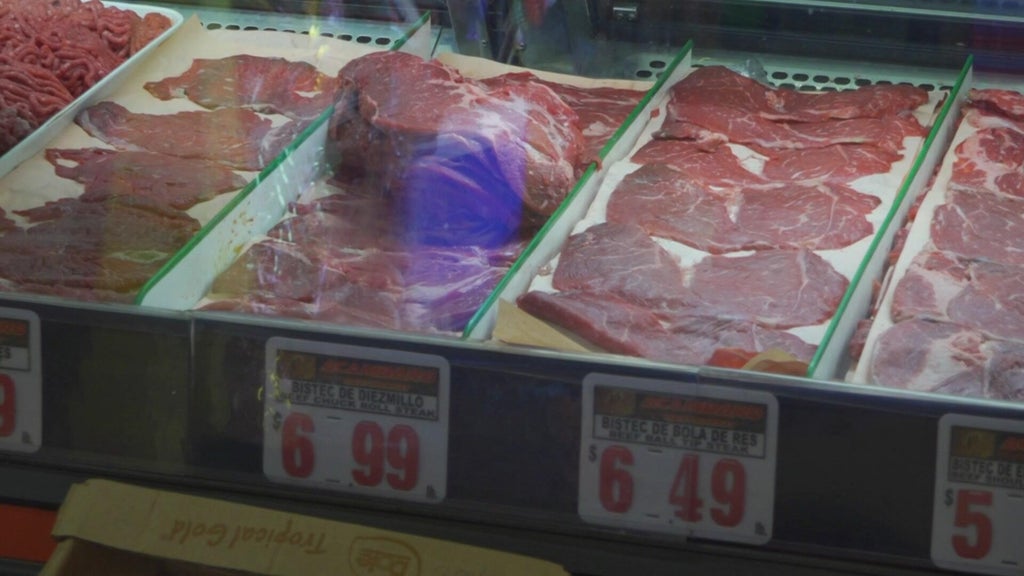Rising Beef Prices and Their Impact on Local Communities
Beef prices have surged to over $9 per pound, marking a nearly 9% increase since the start of the year. Over the past year, steak prices have climbed by approximately 12%, while ground beef has seen a 10% rise. These price hikes are creating significant challenges for consumers and local businesses alike, particularly in areas like Stockton, where meat markets are feeling the strain of these all-time high costs.
Local meat markets in Stockton are struggling to keep up with the rising expenses, forcing some shop owners to make difficult decisions to stay afloat. Acambaro Meat Market, a family-owned business that has been serving the community for 20 years, is one such example. Owned by Francisco Ortega, the market has experienced its toughest year yet due to the steep increase in beef prices.
“We’re selling about half of what we used to sell in the past,” Ortega explained. “We need to raise our prices because they’ve gone up for us.” Despite the challenges, demand for beef remains strong at his store. Ortega noted that customers often purchase large quantities, sometimes as much as 50 to 60 pounds at a time. To accommodate this, he offers the same price he receives from suppliers, only keeping a small margin of around 10%.
Tolong support kita ya,
Cukup klik ini aja: https://indonesiacrowd.com/support-bonus/
The supply chain issues have also become more pronounced. Ortega supplies not just his own customers but also various taco stands and trucks throughout Stockton. As a result, the cost of food items like tacos and quesadillas has risen significantly. Tacos now range from $4 to $4.50, while quesadillas can reach up to $10. Burritos are also priced at $10, which is causing concern among both vendors and customers.
Cristina Salinas, a mother of two, has felt the impact of these price increases firsthand. She mentioned that she has had to find cheaper alternatives to stretch her budget. “I’m making tacos at home, and I’m making chicken tacos,” she said. “It makes you appreciate it even more when you get to eat tacos and order from the taco trucks.”
Dr. Sanjay Varshney, a professor at Sacramento State University, explained that the current situation is driven by a combination of high demand and limited supply. He pointed out that the record-high beef prices are not surprising given the ongoing economic conditions. However, he also highlighted that finding alternatives, like the ones Salinas is using, could help reduce demand and eventually bring prices down.
Despite this potential relief, Varshney warned that the current pricing levels are likely to persist for the foreseeable future. He emphasized that these prices won’t return to pre-pandemic levels, meaning that consumers may need to adjust their habits and expectations.
Varshney also clarified that tariffs are not a major factor in the current beef price surge. Most of the beef consumed in the U.S. is produced domestically, so the price increases are more closely tied to supply chain disruptions and market dynamics rather than trade policies.
As the situation continues to evolve, the ripple effects of higher beef prices are being felt across different sectors, from small businesses to families. The challenge lies in finding sustainable solutions that balance the needs of producers, retailers, and consumers. For now, many are adapting to the new reality, seeking ways to manage costs while still enjoying the foods they love.







